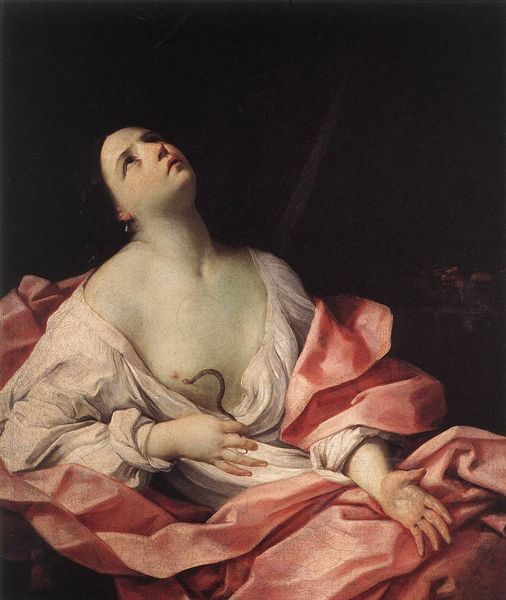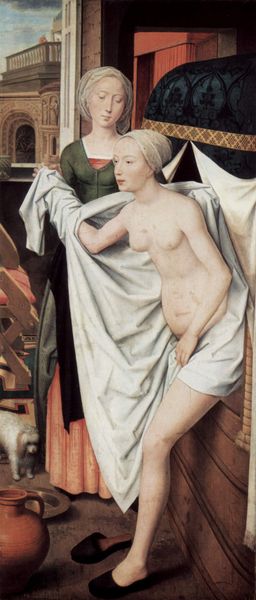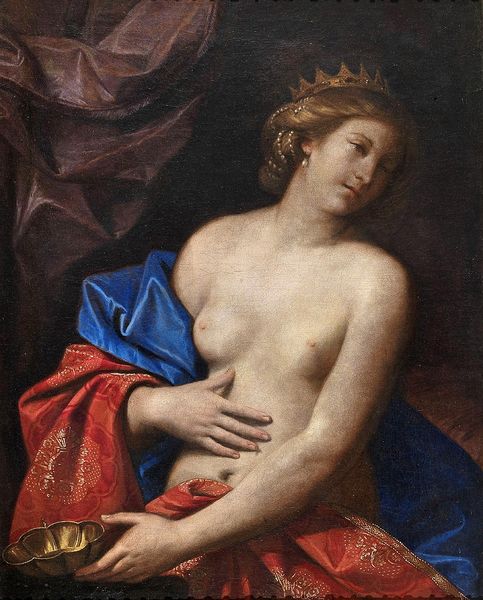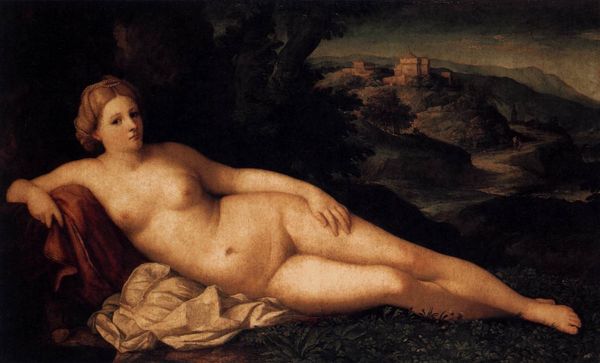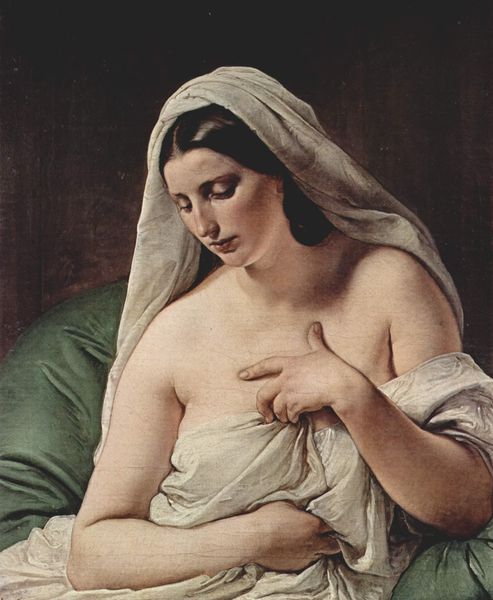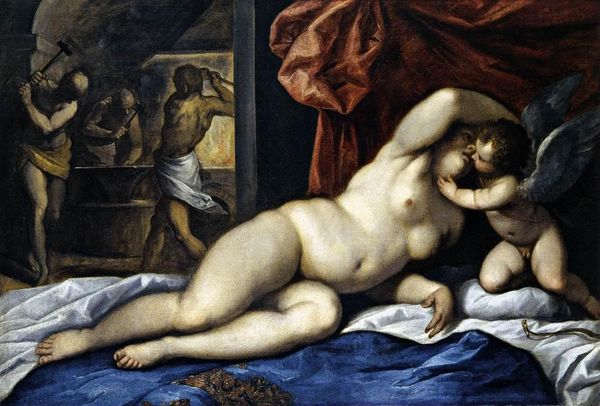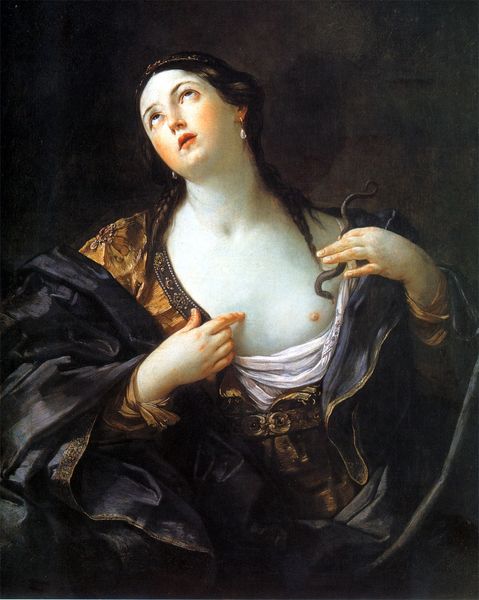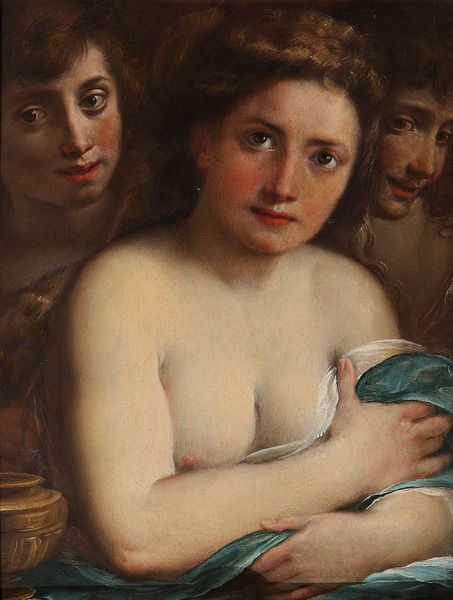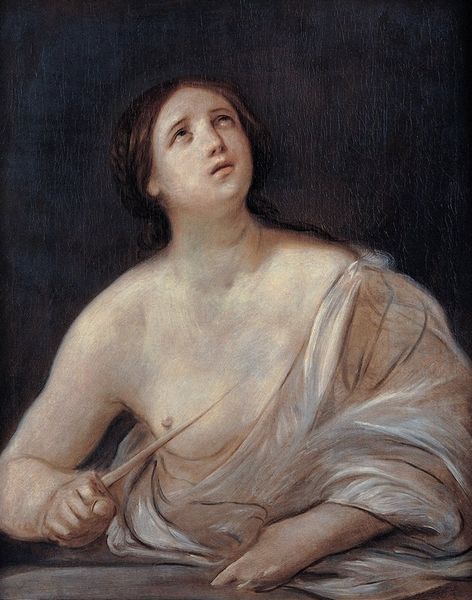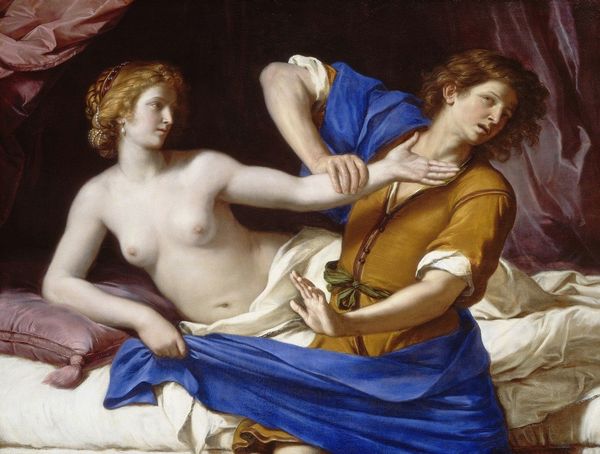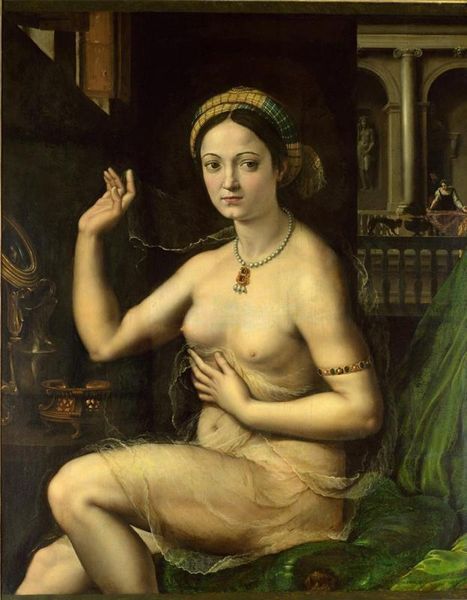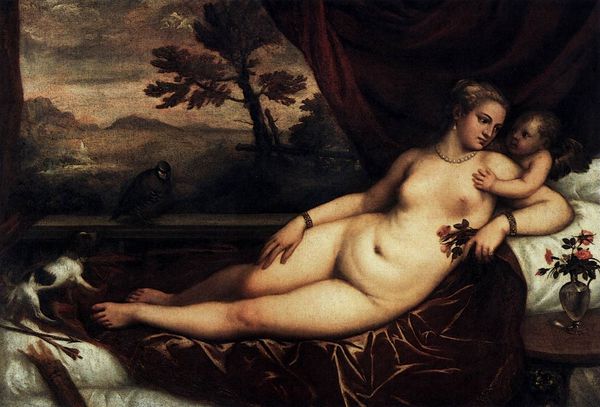
painting, oil-paint
#
portrait
#
baroque
#
painting
#
oil-paint
#
oil painting
#
history-painting
#
erotic-art
Dimensions: 122 x 96 cm
Copyright: Public domain
Curator: Guido Reni's oil on canvas, Cleopatra, completed in 1640, depicts the queen’s final moments. The work hangs in the Palazzo Pitti in Florence. Editor: She appears serene, almost accepting, yet undeniably sexualized in this depiction. The gaze upwards, the partially draped body…it all seems strategically composed. Curator: Indeed, Reni uses a restrained palette to guide the viewer’s eye. Note the interplay between the cool drapery in the background and the warmer tones of the queen's skin and golden robe. The composition leads you to her face, then down to the asp. It is quite deliberately designed to evoke both pathos and, yes, perhaps eroticism. Editor: And what does it mean to eroticize a historical figure, particularly in their death throes? Cleopatra’s story, constantly reinterpreted, often strips her of agency, focusing instead on her beauty and her demise, and linking a powerful ruler primarily to her sexuality, with the consequence that Reni reproduces an oppressive visual vocabulary. Curator: But within the formal constraints of Baroque portraiture, Reni also presents an impressive use of contrapposto in Cleopatra’s twisting pose, echoing classical sculpture. The subtle modeling of her flesh creates a sense of volume and life even as we know life is fleeting. The lighting, dramatic yet diffused, further enhances the sculptural quality. Editor: Yes, but is that aesthetic accomplishment worth the reinforcement of tired, patriarchal tropes? Cleopatra’s death as spectacle, palatable for a male gaze. Consider how rarely we see equivalent depictions of male historical figures reduced to similar, passive moments of dying. Curator: Regardless, his manipulation of light and form serves a compositional goal; guiding our reading of the narrative and reflecting a precise arrangement of shapes, tonal values, and lines within a bounded visual space. Editor: Precisely, the reading depends so heavily on historical precedent that any formal merit remains firmly fixed within specific paradigms, and what that may yield beyond repeating the violence imposed upon female figures throughout art history remains questionable to me. Curator: It’s a complicated interplay between form and cultural context, undeniably. The painting presents us not just a beautiful arrangement, but also a potent image that echoes across centuries. Editor: Yes, a problematic potency, certainly worth interrogating. Thank you.
Comments
No comments
Be the first to comment and join the conversation on the ultimate creative platform.
